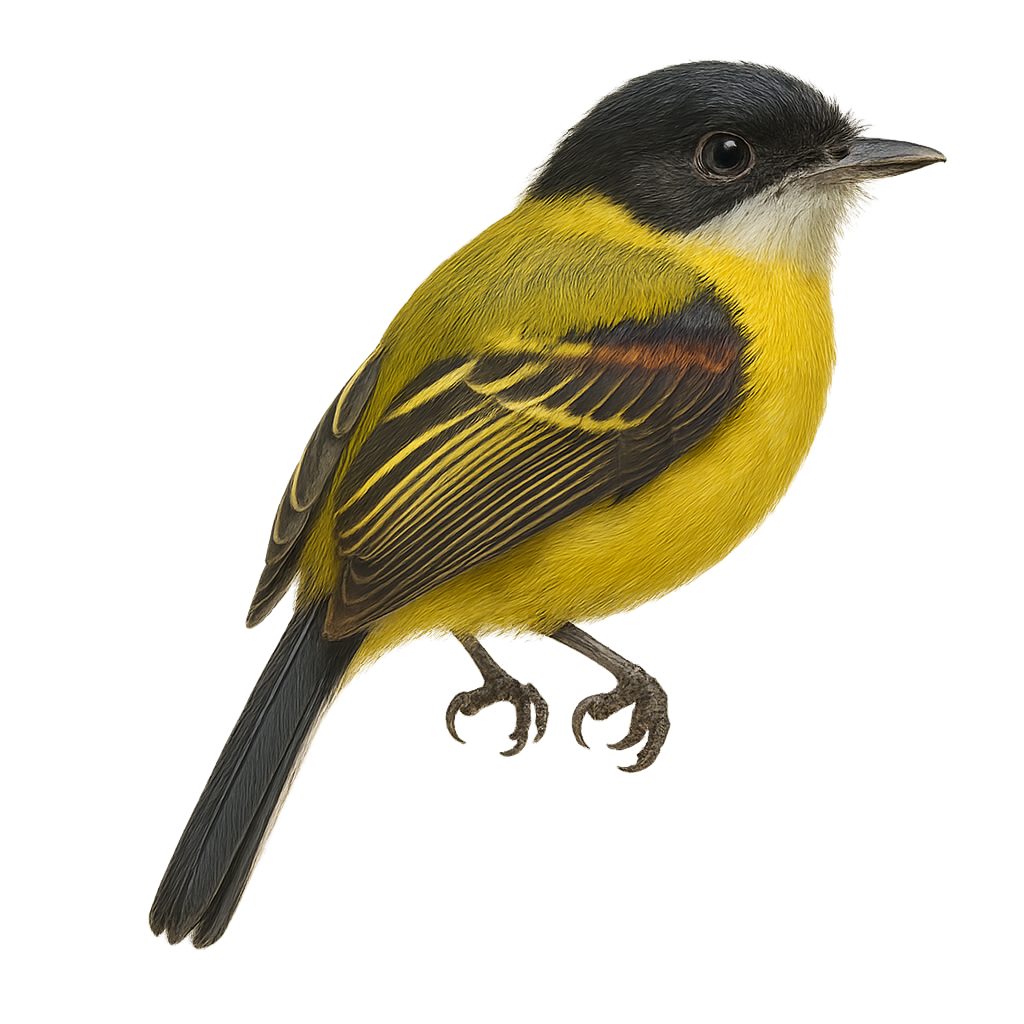Your wildlife photography guide.
Explore the golden-winged tody-flycatcher in detail, study its behavior, prepare your shots.
Where to observe and photograph the golden-winged tody-flycatcher in the wild
Learn where and when to spot the golden-winged tody-flycatcher in the wild, how to identify the species based on distinctive features, and what natural environments it inhabits. The WildlifePhotographer app offers tailored photography tips that reflect the golden-winged tody-flycatcher’s behavior, helping you capture better wildlife images. Explore the full species profile for key information including description, habitat, active periods, and approach techniques.
Golden-winged Tody-Flycatcher
Scientific name: Poecilotriccus calopterus

IUCN Status: Least Concern
Family: TYRANNIDAE
Group: Birds
Sensitivity to human approach: Suspicious
Minimum approach distance: 10 m
Courtship display: December to January
Incubation: 16-18 jours
Hatchings: December to February
Habitat:
Humid forests, wooded areas
Activity period :
Primarily active during the day, with peak activity in the morning and late afternoon.
Identification and description:
The Golden-winged Tody-Flycatcher, Poecilotriccus calopterus, is a small bird from the Tyrannidae family. It is notable for its golden-winged feathers and primarily olive-green plumage. This bird inhabits humid forests and wooded areas in South America, particularly in Colombia, Ecuador, and Peru. Often seen in pairs or small groups, it feeds on insects caught in flight. Its modest size and discreet behavior can make it difficult to spot. Although its habitat is threatened by deforestation, it is currently listed as "Least Concern" by the IUCN.
Recommended lens:
400 mm – adjust based on distance, desired framing (portrait or habitat), and approach conditions.
Photography tips:
To photograph the Golden-winged Tody-Flycatcher, it is advisable to use a telephoto lens of at least 400mm to capture precise details without disturbing the bird. Look for it in humid forests and wooded areas, where it often moves in small groups. Be patient and discreet, as this bird is suspicious. Use a fast shutter speed to freeze its quick movements when hunting insects in flight. The natural light of the morning or afternoon is ideal to highlight the golden colors of its wings.
The WildlifePhotographer App is coming soon!
Be the first to explore the best nature spots, track rutting seasons, log your observations, and observe more wildlife.
Already 1 432 wildlife lovers subscribed worldwide

